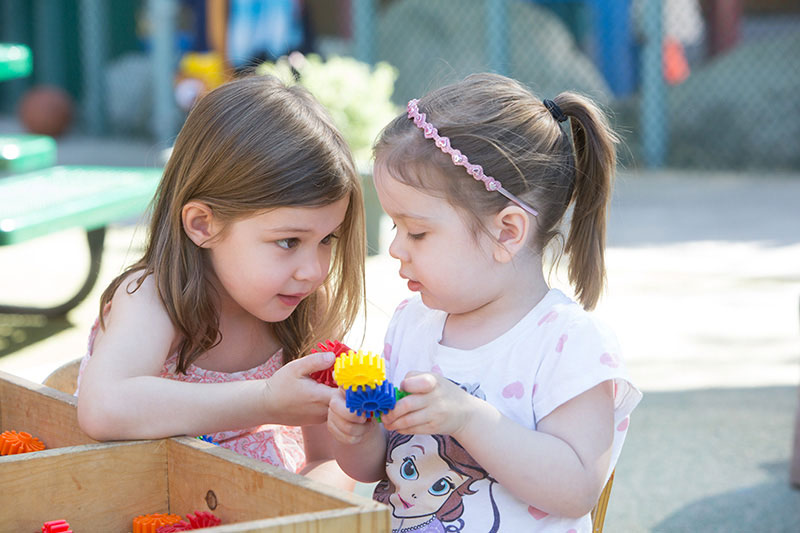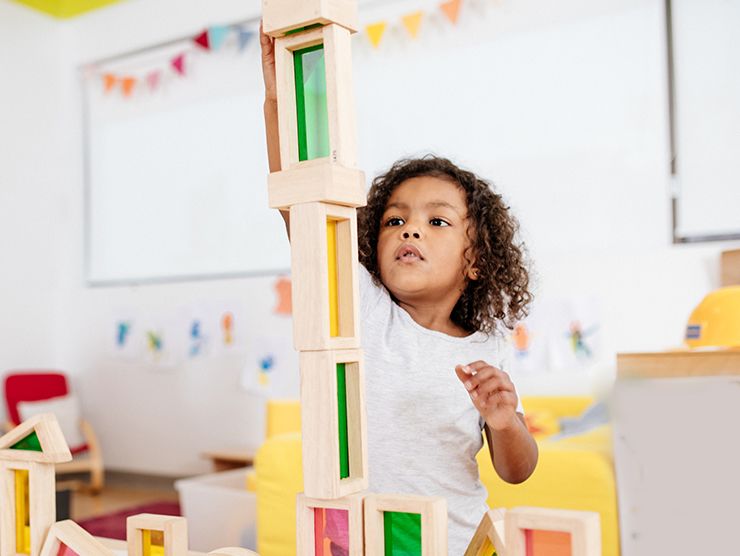Welcome to the world of pre-kindergarten, or pre-k, as it is affectionately called. In this space, glue sticks and rubber bands are treasured, shoes may occasionally be on the wrong feet, and learning is happening through laughter, joy, and play.
If you find yourself wondering, what is pre-k?’, you’re not alone. Pre-k is more than preschool, but not quite kindergarten. Pre-k is that magical middle ground—that gentle introduction to “big kid” school, with plenty of time still carved out for the joys of childhood.
Pre-k classrooms are a setting generally reserved for children ages 4-5, or the year right before entering kindergarten. In this setting, preparations are underway to support children socially, emotionally, and academically—all skills required for future, not just school, readiness. Here’s what’s happening in a typical pre-k classroom.
What happens in pre-k?
The year before kindergarten is a time of tremendous growth. As parents, you want to ensure that your child is in an environment that nurtures their development and sets up success.
Learning through discovery and play
A strong pre-k curriculum is research-based developmentally appropriate, and designed to support the whole child. Educators engage and extend learning through the context of children’s interests and developmental goals and objectives. Learning occurs through playful experiences and interactions.
- Stacking blocks? That’s physics.
- Negotiating over crayons? That’s teamwork.
- Mixing sand and water? That’s early chemistry.
Play isn’t just fun—it’s brain-building. In fact, the United Nations recognizes play as a fundamental right of every child, and pediatricians are even prescribing it during wellness visits. Developmentally, children need to play. It is fundamental, not extra. Whether parallel, solitary, in a group, dramatic or constructive, play in all its forms is a teaching practice that enhances a child’s development and learning.
As Fred Rogers once said, “play is often talked about as if it were a relief from serious learning. But for children, play IS learning. Play is really the work of childhood.”
Supporting emotional growth
Pre-k is time of emotional growth. Children begin to express preferences, show empathy, and navigate complex feelings. Moods may shift quickly, but so does their capacity to understand and manage those emotions.
Every moment in the pre-k classroom is an opportunity for educators to support a child’s social-emotional learning. They help children:
- Name and understand their emotions
- Practice self-regulation
- Make responsible decisions
- Build friendships and resolve conflicts
Wanting to enter play with a group of friends? Upset because the block tower has collapsed? Every moment a teacher is supporting these situations; emotional growth is taking place.
Encouraging future readiness
What is pre-k preparing your child for? More than just kindergarten—it’s preparing them for the future.
We know that to be ready for school means to be ready for the future. With a holistic approach to curriculum, you can be sure your child is supported in the development of essential life skills and competencies they need to be successful in the 21st century. These skills include collaboration, communication, content (math, science, literacy, and social studies), critical thinking, creativity, confidence and curiosity.
Pre-K supports more than just your child’s next step—it supports you, too. As you hear their stories, watch their learning unfold, and see their confidence grow, you’ll witness your little one becoming a more curious, capable version of themselves.
So, don’t worry if drop-offs are teary and shoes are still on the wrong feet. Pre-k is a place where it’s okay to learn, grow, and make mistakes. That is exactly how it should be!
Learn more about how Bright Horizons’ pre-k programs and curriculum can support your child’s education journey.



.ashx?as=1)

